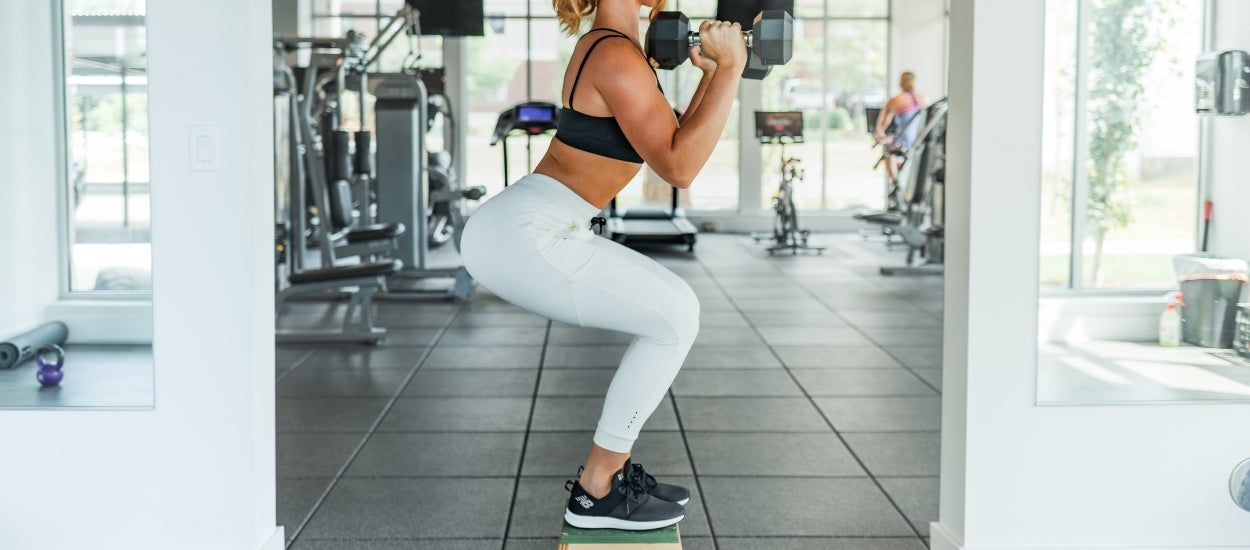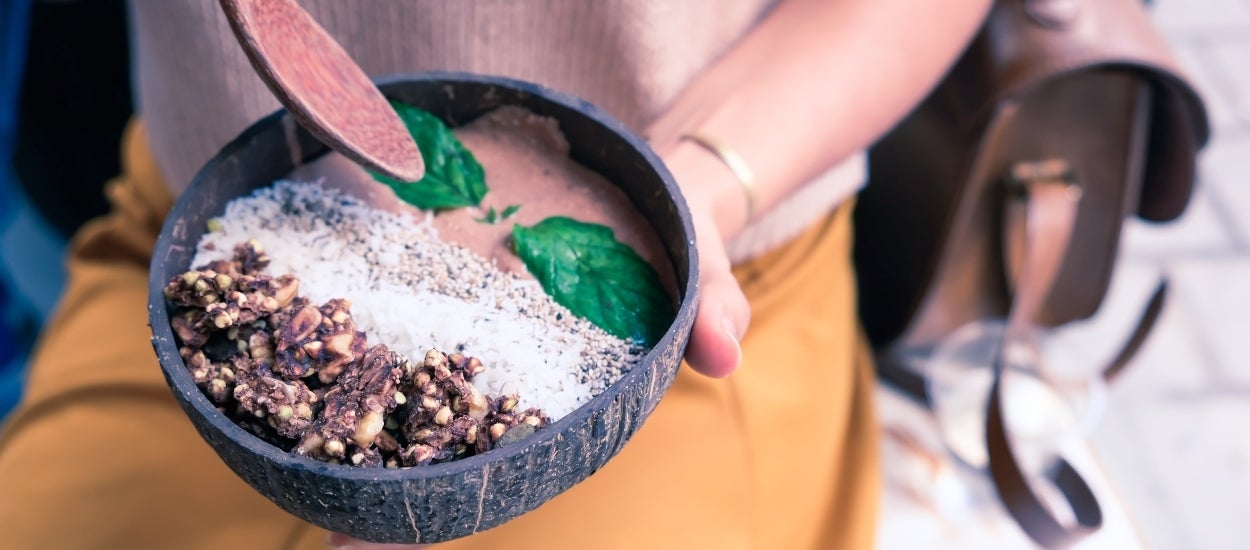A Beginner’s Guide to Booty Building
- 28.01.20
From Kim Kardashian to Tammy Hembrow, it's no secret that mastering the art of a perky and well-rounded booty is the fitness trend of the decade. But, what if we told you that strong glutes aren't just good for filling out your tights or for the aesthetics factor?
Believe it or not, strong glutes will also help to improve your workplace posture from 9-5, enhance your athletic performance in the gym and on the field, and will even reduce your risk of injury. If you’re looking for a little guidance to tone, grow and define your booty, keep reading to find out everything you need to know to get started on your booty-building journey!

The Basic Anatomy of the Booty
If you’re serious about achieving a perky peach, then you’ll need to have a clear understanding of what muscles power your booty and what it takes to customise its shape. In simple terms, a combination of muscles and fat are what gives your booty shape and size, and let’s not forget that it will also depend partly on your body type and genetics. While your genetics may determine the overall shape of your glutes, with hard work, it is possible to grow and alter them.
Here are the three primary muscles that play an important role in giving your booty definition and shape:
- Gluteus maximus - This is the largest muscle in your body and makes up the bulk of your buttocks. Achieving a toned gluteus maximus is what will give you a rounder and more shapely booty, while also preventing ‘saggy butt syndrome’. The gluteus maximus muscle is responsible for hip and thigh movements, such as sitting down, climbing a flight of stairs or standing up straight.
- Gluteus medius - The gluteus medius muscle sits roughly a layer deeper beneath the gluteus maximus. More commonly referred to as your ‘upper glutes’, the gluteus medius is responsible for hip abduction (ie moving your leg away from your body, sideways) and rotation. Training your upper glutes is suggested to help round out the shape of your butt, to achieve the desired shape.
- Gluteus minimus - Just as the name suggests, the gluteus minimus is the smallest of all three gluteal muscles. But, let’s not forget, great things come in small packages, too. In terms of location, the gluteus minimus is situated even deeper than the other two, sitting right beneath the gluteus medius. This particular muscle prominently works with the gluteus medius to assist in leg abduction and medial rotation.

Why Everyone Should Train Their Glutes
Now that you understand the mechanics, are you ready to delve a little deeper into the benefits of training your glutes that go beyond the obvious visual benefits?
1. Improves posture
If you spend most of your day slouched in a chair in front of your computer, the chances are, you probably have pretty bad posture. In today's society, it’s no secret that we do an awful lot of sitting. Whether we’re at home, work or driving, we spend most of our days with our glutes inactive. The result? Poor posture is likely to result in tight hip flexors, weak extensors, and sleeping glutes that forget how to activate properly. Over a longer period, postural issues could lead to various conditions, including swayback and kyphosis-lordosis.
How to fix: Try throwing a few extra glute exercises into your routine. For instance, add squats, lunges and deadlifts to your gym program, ensuring you do adequate stretching as well.
2. Prevents injury
Did you know that strong glutes support your lower back, hips, knees and ankles? Believe it or not, if you aren’t regularly using your glutes, muscles that weren’t designed for the job will step in and take over. While this might not sound damaging in the short-term, in the long run, these ‘helper muscles’ are likely to become overstressed, resulting in pain and potential injury.
Having strong glutes isn’t just about achieving the perfect peach shape, it’s about supporting your body, too. As glutes are also known to help stabilise your hips, weak gluteal muscles may result in poor alignment of your lower body, which will make you more susceptible to injuries, such as Achilles tendonitis, shin splints, ACL sprains and more.
3. Improves athletic performance
Strong glutes play an important role in accelerating, decelerating, changing directions and creating explosive power in jumps, meaning they’re important for just about every sport. Improving hip extensions and your body’s ability to propel forward are just a couple of the benefits of glute training, and are also the key to improving one’s ability to jump higher, take off with more power in a race, cycle faster, and train longer. In simple terms, those with strong glutes will be faster, more efficient and explosive in their movements than those with weaker glutes.

3 Tips to Grow Your glutes
1. Make sure you’re activating the right muscles
Seems like a no-brainer, right? The reality is, just because you’re doing squats or lunges, doesn’t necessarily mean you’re activating your gluteal muscles...or at least, not as effectively as you could be. For many of us, we spend our days sitting, which turns off our glutes and stops them from activating when we’re actually ready to use them. As such, it’s important to start small and to take note of where you’re feeling the burn, and alter your technique accordingly to ensure you’re hitting the muscles you want to work on. For example - If you’ve ever woken up the next morning after a ‘booty’ workout, only to feel sore in your quads and nowhere else, the chances are, you’re probably not activating your glutes and might need to adjust your technique.
Try incorporating the following tips when you’re next training glutes:
-
Perform a glute-activation warm-up - Performing a warm-up that intentionally focuses on firing your glutes allows you to create a mind-body connection. If you are new to booty workouts or suspect that your glutes aren’t firing properly during your workouts, this is a great way to ‘wake’ your glutes up to ensure they remain engaged throughout each exercise. For example, start your workout with a warmup that includes clams, a crab walk, donkey kicks, and a glute bridge.
-
Squat with intention - If you’re performing squats, aim to stand with your feet wider than your shoulders. Turn your toes out slightly to accommodate your stance, which will transfer the work to your posterior chain. In turn, this will require the activation of your hamstrings and gluteus maximus. Additionally, when descending during a squat, ensure your bum is back and down, essentially mimicking the movement of sitting down on a chair (don’t forget to ground your feet so you’re stable at all times). For best results, focus on getting your thighs parallel to the ground, getting deeper (closer to the ground) as you progress.
-
Make sure you’re doing the right exercises - Try to incorporate more exercises that are undoubtedly going to target and help grow your glutes. According to Bret Contreras, aka “The Glute Guy”, three highly effective exercises for growing your glutes include the barbell hip thrust, B-stance hip thrust and dumbbell frog pump as they’re easy to learn correct form, you can progressively overload, and they’ll encourage a high level of glute activity.

2. Incorporate Progressive Overload
The principle of progressive overload involves continually increasing the demand placed on your muscles to continually increase muscle size, strength and endurance. In simple terms, the aim is to continually make your muscles work harder to avoid them from getting complacent, so you can continue to see results.
Wondering how you can incorporate progressive overload into your program?
-
Increase the resistance - When doing strength training, try increasing your weight and decreasing your rep range (so your form isn’t compromised).
-
Increase reps - If you aren’t ready to increase the weight, try increasing your rep range. Instead of stopping at 8 reps, aim for 10. However, that doesn’t mean you should be indefinitely adding reps. To maximise your muscle-building capabilities, you should aim for a rep range between 8-12. Once you reach 12 reps, switch to increasing resistance and lowering your reps.
-
Increase training frequency - Increasing how frequently you train a particular muscle group is also a form of progressive overload. Increasing your training frequency is particularly beneficial when trying to target a weak or ‘sleepy’ muscle group. But, make sure you prioritise rest days too. Muscles require recovery time to repair and grow!
-
Reduce your rest time - Increase the overload by reducing your rest time in-between sets. This will allow you to do the same amount of work, in less time!

3. Fuel your body for growth
You need to take your pre-workout and post-workout nutrition seriously as it is ultimately what will fuel your workout to give you the energy to lift heavier and perform better, while simultaneously protecting your muscles from breakdown. Without quality nutrition, your body will be unable to stimulate muscle fibres to form new scar tissue, and ultimately, build muscle mass. If building up your gluteal muscles is your goal, the aim is generally to keep lean, while simultaneously building as much muscle as possible. As such, try to consume a small meal approximately an hour before your workout (not one that will leave you feeling full and bloated).
According to bodybuilding.com, your pre-workout nutrition should contain medium-to-fast digesting proteins and slower-digesting carbs, such as:
-
Egg whites (fast-digesting protein) and whole grain bread (medium-digesting carb)
-
Low-fat milk (fast-digesting protein) and oatmeal (slow-digesting carbs)
-
Chicken (protein) and sweet potato (slow-digesting carbs)
-
Tuna (protein) and brown rice (slow-digesting carbs
If you’re training on an empty stomach, you’re likely to experience a lot more than just feeling sluggish and unable to perform to your maximum potential. For instance, if there’s no food in your stomach, your glycogen stores will become rapidly depleted, at which point, your body will start to burn your hard-earned muscles as its next available source of energy. Additionally, when running on empty, your workout output greatly suffers (particularly where intensity and strength are concerned). After a gruelling workout, your muscles are largely depleted of glycogen and are likely to shift towards a catabolic (muscle-wasting) state. To replenish your glycogen stores and to facilitate muscle growth, it’s also important to turn to fast-digesting carbs and protein (such as WPI).
Ready to give it a go? Try out our ASN 10 Week Challenge Trainer, Sarah’s booty blasting workout!














